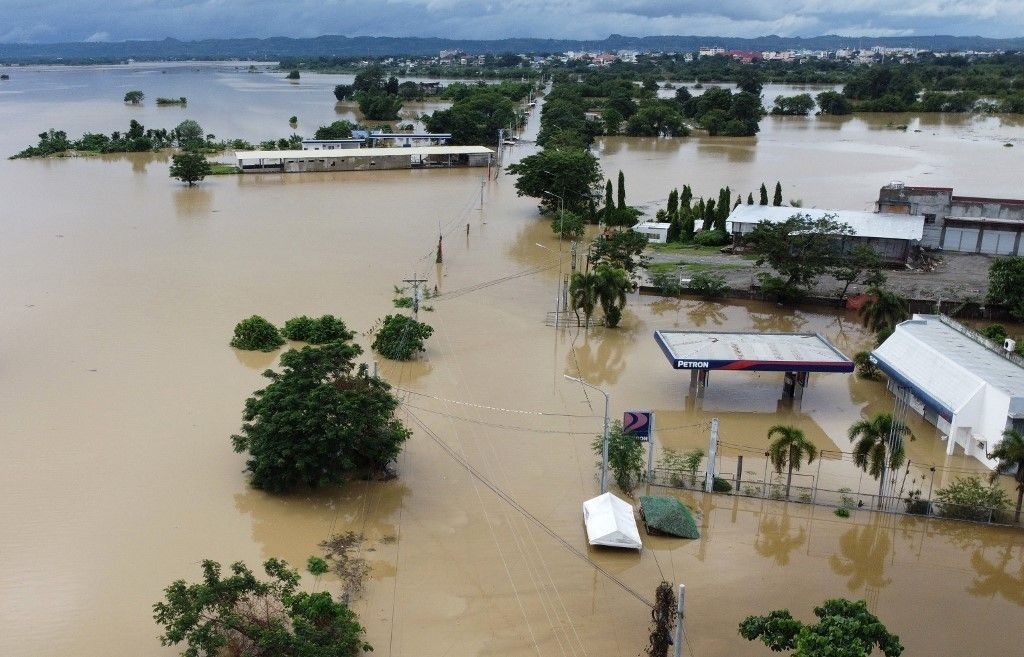P663 million calamity fund released in October

MANILA, Philippines — The government released P663 million in calamity fund in October, with the remaining P8.8 billion ready to be tapped for disaster relief operations for the rest of the year.
Latest data from the Department of Budget and Management (DBM) showed that the remaining national disaster risk reduction and management fund, commonly known as the calamity fund, is at P8.79 billion out of the P20.7 billion allocation for 2022.
This was after the DBM released P663 million in October, lower than the P1 billion it disbursed the month before.
The entire P663 million was released to the Department of Social Welfare and Development (DSWD) to replenish the agency’s quick response fund (QRF).
Based on the law, first response agencies, such as the DSWD are allocated QRFs in their annual budget. Once the QRF of any agency reaches 50 percent or lower, it can request for replenishment from the DBM.
The QRF is used for the reconstruction, rehabilitation or repair of damaged roads, bridges and buildings, among other disaster-related expenses.
Apart from DSWD, agencies with QRFs are the departments of Agriculture (DA), Education, Health, and Public Works and Highways (DPWH), as well as the Bureau of Fire Protection, Philippine National Police and the Office of Civil Defense.
As of end-October, P11.9 billion had already been released by the DBM, 86 percent or P10.25 billion of which were allocated to national government agencies.
The remaining P1.66 billion spent for calamity funds went to government-owned and controlled corporations.
The DSWD is the top recipient with P3.57 billion, followed by the DPWH with P3.12 billion, and the DA with P2 billion.
With Congress set to resume session on Nov.7, Senate President Juan Miguel Zubiri said the chamber would factor in the effect of Severe Tropical Storm Paeng in its deliberations on the proposed P5.268-trillion national budget.
“Paeng will figure largely in our budget deliberations, once they start in the Senate next week. We will have to consult with the NDRRMC and local governments to assess our recovery roadmap,” Zubiri said, referring to the National Disaster Risk Reduction and Management Council.
Zubiri was in Mindanao to deliver relief goods to local governments affected by Paeng.
“Indeed, apart from personally handing over our donations, I am also here in Mindanao to hear directly from our local governments – what is the damage like on the ground? What will they need to rebuild and recover? And I will take all the answers back to the Senate when session resumes next week,” he added.
“Mindanao will be needing sustained aid after Paeng,” he continued. “We’re here to deliver some relief goods, for now, to make sure our affected communities don’t go hungry. And it is good to see so many private citizens doing the same. It really shows the heart of our people.”
But he said the government cannot go on being reactive in responding to calamities.
“But we also need to push for long-term solutions. We cannot continue to be reactive when it comes to disaster management, especially since there are lives at stake. We keep learning this the hard way. We have already lost over a hundred lives to Paeng,” he pointed out.
He also said he hopes President Marcos would reconsider his position against the setting up of a separate department in charge of disaster response.
“I mentioned it to the President and the President said ‘I don’t think we need a new department particularly for disaster management Migz.’ I said sir, with due respect, with all the typhoons and calamities that are happening here we just still need a better response team,” Zubiri said, recalling a conversation with Marcos a month ago.
“I will again make that pitch to the President and hopefully he listens and we can strengthen our disaster management capabilities,” Zubiri said.
He said his proposal is similar to the Federal Emergency Management Agency of the US.
“Now, if we have an agency, the agency will make sure that every LGU is ready and will have a standard of excellence,” Zubiri said.
Higher calamity fund
His colleagues, meanwhile, have expressed support for a proposal to increase the calamity fund for 2023, including by slashing allocations for intelligence funding.
Senate Minority Leader Aquilino Pimentel III said the government must rechannel non-essential projects, activities and programs both in the 2022 General Appropriations Act and the proposed P5.268-trillion national budget for 2023 in order to make available funds for critical programs.
“We must ensure that resources are immediately available and accessible both by the national and local government,” Pimentel added. “Let us cut confidential and intelligence funds and rechannel this much-needed allocation to strengthen our disaster response capabilities,” he stressed.
“These funds can be used instead to beef up the weather forecasting capabilities of PAGASA, build houses damaged by typhoons and earthquakes, and repair damaged roads and bridges,” Pimentel said, referring to the Philippine Atmospheric, Geophysical and Astronomical Services Administration, the main agency responsible for monitoring typhoons in the country.
Sen. Bong Go also said he is in favor of increasing calamity funds for 2023. “I have no objection to that because it is our duty to immediately help those affected by various calamities so that they can get up again immediately,” he said.
Like Go, Pimentel acknowledged the need to pump more funds into the country’s aid, relief and rehabilitation programs for the victims of calamities with an average of 20 tropical cyclones a year.
Under the proposed National Expenditures Program for 2023, allocation for calamity fund is P31 billion.
“Given these 20 tropical cyclones a year and the fact that the Philippines is located in the Pacific Ring of Fire, it is imperative to pump more funds into disaster and calamity response and recovery programs,” Pimentel said.
“The more important question is how to ensure that this huge fund is used immediately and more correctly,” Go, for his part, said. – Cecille Suerte Felipe, Roel Pareño
- Latest
- Trending























